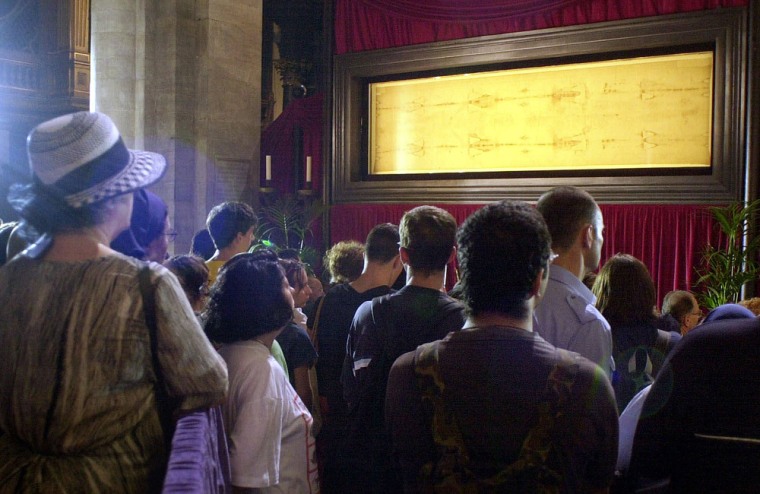Just as Salt Lake City was famous long before the 2002 Winter Olympics because of its ties to the Mormon Church, so the 2006 host city has been renowned for its own religious connection: For the last 428 years it's been home to the world's most celebrated holy relic, the Shroud of Turin.
Could this linen cloth, as believers think, have wrapped the body of the crucified Jesus Christ at the moment he rose from the grave?
Take your pick. The shroud is either: A) Astonishing physical evidence of the Easter miracle; B) Fascinating medieval folk art; or, C) A fabulous fraud.
Don't expect any help from the Roman Catholic Church as you decide. The Vatican remains steadfastly neutral on this popular religious puzzle.
Olympics tourists might stroll to the Piazza San Giovanni and the cathedral where the more than 14-foot-long shroud is encased in a huge, climate-controlled steel box under bulletproof glass. But none will see the storied and closely guarded relic. The next display is scheduled 19 years hence, and Turin's Cardinal Severino Poletto barred even private viewings for dignitaries at the games.
Fascination with the shroud has spread beyond Roman Catholics to secular scientists and even some evangelical Protestants. There are some 28 organizations of devotees in the United States alone, five in Italy and 10 elsewhere.
The shroud's mystique stems from its sepia image of a wounded, wiry, bearded man. The faint picture is formed by discoloration of the outer layer of the fibers. Scientists have reached no agreement on how hoaxers could have produced this figure.
Other uncanny aspects: Pollen embedded in the cloth came from plant species found only in Turkey and the Holy Land. Blood stains seen on the cloth contain chemicals from human blood and weren't painted on. The catch is that the stains are red — but old blood turns black.
Controversial for centuries
The shroud's existence can only be traced back to 1357 when it went on display in Lirey, France. It was controversial even then. The local bishop declared the exhibit a fraud and a subsequent bishop warned the pope in 1389 that the shroud was a "product of human handicraft."
Pope John Paul II's Vatican was given ownership in 1983 and approved various scientific tests in 1988. The chief result seemed to settle the authenticity question. University laboratories in Oxford, England, Tucson, Ariz., and Zurich, Switzerland, tested samples for carbon 14 decay and dated the origin at 1260 to 1390.
"It is most unlikely that this object is the authentic burial shroud of Jesus," the 2003 edition of the New Catholic Encyclopedia concludes.
But that didn't end the argument. Pro-shroud scientists proposed that the 1988 samples were skewed by contamination so better tests are needed.
There things stood, more or less, until a year ago when Raymond Rogers, a retired chemist at Los Alamos National Laboratory, reported further tests in the technical journal Thermochimica Acta. (He died shortly after publication.)
Rogers suspected contamination and, more important, reported that threads from the 1988 samples contain no vanillin, a compound in flax that gradually disappears. By his calculations, the shroud is 1,300 to 3,000 years old. Though it's possible the cloth dates from Jesus' lifetime, Rogers noted, actual connection to Jesus can never be proven.
Rogers told interviewers that "competent scientific efforts to understand the shroud have a bleak future" because church authorities "will never allow another series of tests."
Rogers' research was just one question mulled over at an international shroud conference in Dallas last September — a meeting that received Pope Benedict XVI's blessing. Thirty scholars presented papers, turning up a couple shreds of shroud news:
- The image of the body's back on the cloth lacks flattening of the calves and buttocks, indicating the body was upright, not lying down, when the image was formed.
- It may be that first known exhibit didn't occur in 1357, after all.
Of course, there's still more to say on the subject. Turin will host a shroud symposium in May.
